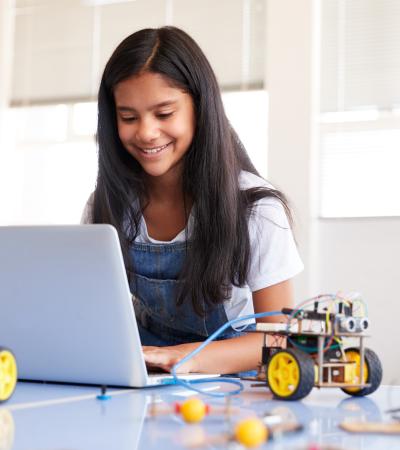Phones on silent

This common storytime disruption is actually for the grownups. Ensure ground rules are established for adult caregivers, not just kids, before storytime begins. Ask adults to help make storytime run smoothly by encouraging participation and demonstrating quiet, listening behavior.
Start by announcing 15 minutes before the program that phones won’t be allowed. To help with this, Maureen Kearney of Pima County (Ariz.) Public Library sets out toys ahead of storytime to help kids release extra energy and allow parents to chat or have some final moments checking their phones. “This playtime is a chance for parents to greet each other and to let the kids get comfortable in the room and with each other,” says Kearney.
Stephani Moss of Henrietta (N.Y.) Public Library starts storytimes by saying:
"Please turn cell phones to silent, and if you take pictures of your child, please try to make sure it is only your child in the shot.”
Moss also makes space at the end of storytime so parents can socialize and children can play. Kearney kicks off the program with a verbal announcement to the adults, "I'm going to ask the grownups a few favors: one, if you can turn off and put away your cell phone so we can all focus on the stories, two, if your child gets hyper or unhappy, or they need a potty break or a trip to the water fountain, please feel free to slip out the door in the back and slip back in when they're ready to rejoin us.”
This leads us to another common tip…
It’s OK for a child to leave in the middle of the story
On occasion, storytime won’t change the mood of a restless kiddo. Make sure kids and grownups know it’s okay to leave for any reason.
Moss’s storytime introduction also includes directions to the bathroom and the statement:
“If storytime is not for you today and you need to go out, that is OK! Sometimes we need a break, and we can always try again later."
Stay behind the tape line
It's great if kids want to get up and move around during storytime, especially if the story calls for active movement and silliness. Just remember to encourage a key rule: keep your hands (or feet, toys, things, etc.) to yourself and stay within your own space.
If you use a tape line or another barrier between yourself and the children, make sure it's established early on that kids don't cross that line or try to rush toward the storyteller once the story begins. The same goes if you use individual carpet squares — make sure children and their grownups know they should stay on their squares during the entirety of storytime.
The following graphic, with wording courtesy of Katie Guthrie, Hall County (Ga.) Library System, encourages caregivers to keep their child within arm's reach:

Food safety and cleanliness
If you allow food during storytime, keep a handheld vacuum nearby to quickly clean up leftover crumbs. Make sure your pre-storytime announcement includes food rules and emphasizes that kids should not be sharing snacks amongst themselves.
This storytime expectations board at Boaz (Ala.) Pubic Library highlights putting trash in trash cans and cleaning up messes:

Many librarians encourage no snacks at all during storytime due to cleanliness and allergen safety. It can be easier to manage no food during storytime as it can become a distraction or even a health hazard. Kids can eat their snacks once storytime is over outside and under the watch of their caregivers.
With a clear set of ground rules, your storytimes will be fun and safe for all participants. How do you maintain order during storytime? Email us at programminglibrarian@ala.org.



